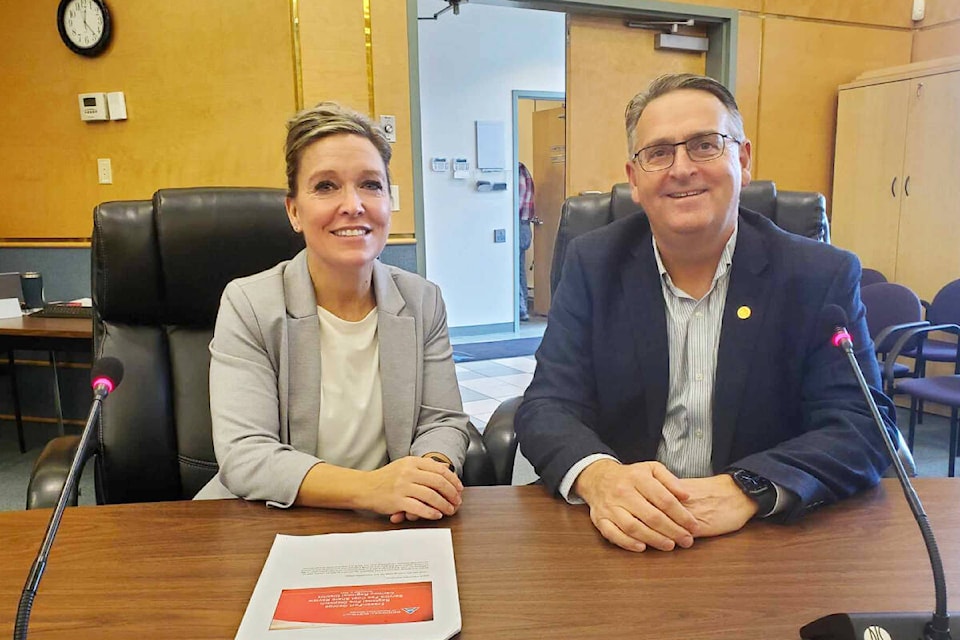Changes are coming to 9-1-1 services in B.C., including for clients of Regional District of Fraser Fort George (RDFFG).
The RDFFG provides 9-1-1 dispatch to the Cariboo Regional District (CRD), Bulkley-Nechako (RDBN), Central Kootenay (RDCK) and Kitimat-Stikine (RDKS).
A new system, next generation 9-1-1 (NG9-1-1-) will have the ability to use the technology everyone is familiar with today, said Melanie Perrin, manager of public safety operations with the (RDFFG).
“We will be able to text, be able to video call, be able to send data packages. That will be able to come from the field from a 9-1-1 caller, ” Perrin said.
It will start out with real-time texts being accepted first, she added.
“It’s definitely still a pathway before we get to the video calling.”
Perrin and RDFFG chief administration officer James Martin spoke to the CRD board on Thursday, Nov. 9 about the program and the proposed cost share formula, as the present service agreements are set to expire on Dec. 31, 2023.
In 2024, the cost share payments for each regional district will increase by 6.6 per cent for the new program.
The amount could have been greater but instead the RDFFG will use $3 million in Union of B.C. Municipalities funding to off-set the investment costs.
There will be 21.3 per cent increase over 2024 in 2025, followed by zero per cent increases in 2025, 2026 and 2027.
For CRD residents the 2023 tax requisition rate is $3.98 per $100,000 residential assessed value.
To fund the new system, the requisition would need to increase to $4.11 per $100,000 assessed value based on 2023 revised assessments, or three percent, the CRD manager of communications Gerald Pinchbeck said.
“The rate will be updated in 2024 to reflect changes to the assessment roll in January,” he said.
In addition to those changes, privacy and security protections will be enhanced through a new telecommunications network, Perrin said.
“I think the impacts, along with changes to the GIS [Geographic Information Systems] data formatting will be better caller locating pieces ensuring that the caller routing goes to the right call centre, which all speeds up the ability for emergency services to get to the person who needs the services,” Perrin said.
The GIS data will be more precise when it comes to the location of the caller as well.
“It will increase the accuracy because today it is not as accurate as it could be, based on gaps we see in our GIS piece,” Perrin said.
When the dispatcher receives a photograph of a car accident, for example, then it can be determined what kind of apparatus is needed to attend the scene.
One of the challenges with 9-1-1 callers is they are in a state of stress and sometimes it is difficult to get all the needed information, Perrin said, nothing with the new technology, information will be gleaned from photographs and video formats that will better prepare responders.
The ability to phone 9-1-1 on a landline will still be there, she confirmed. The new options will be additions to that service.
Martin said RDFFG started offering 9-1-1 service in 1991.
Prior to the RDFFG putting in a 9-1-1 dispatch system, people living in the Cariboo and Northern B.C. wanting police, fire or ambulance had to dial a seven digit number.
“Our regional district decided 9-1-1 would be a better system. North Cariboo was part of it and because it was a function of the telephone switching system so if Prince George was doing 9-1-1 and you were in Quesnel and called 9-1-1, you were part of it.”
A pie graph depicting statistics for 2023 divided the call volume.
RDFFG had 48.44 per cent, CRD had 12.50 per cent, RDBN had 7.53 per cent, RDCK had 11.34 per cent and RDKS had 20.18 per cent.
READ MORE: 9-1-1 texting available for hearing and speech impaired
READ MORE: Next Generation 9-1-1 promises B.C. emergency dispatching revolution
Don’t miss out on reading the latest local, provincial and national news offered at the Williams Lake Tribune. Sign up for our free newsletter here.
